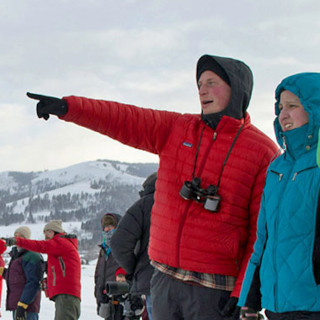Student Spotlight: Jen Harrington
In this episode, hear from Jen Harrington, a recent graduate of UM’s College of Forestry and Conservation. Jen grew up in Missoula and watched over the years as more and more Superfund sites were declared around the state. As a graduate student at UM, she focused her work on ways to improve how federal agencies consult with tribal communities about Superfund sites. Jen’s thesis – a case study about the Confederated Salish and Kooetnai Tribes and the Middle Fork of the Clark Fork River – is available at UM’s Scholar Works website.
Episode Extras
Jen's Thesis on UM’s Scholar Works Website
University of Montana’s Willow AGEP Alliance webpage
Story Transcript
I grew up on the North side of Missoula and very close to the house that I lived in was a state Superfund site, the White Pine and Sash. And then in the 1980s the issue with the Clark Fork River came up and more and more Superfund sites were being declared around the state. I think for me once I entered the university system, the interest was just understanding how do we repair these areas and how do we prevent them.
My name is Jen Harrington, and I am a graduate student in the College of Forestry and Conservation in Resource Conservation.
My master's thesis is about consultation with federally recognized tribes and the Environmental Protection Agency on proposed and existing Superfund sites. And what exists now and what recommendations might improve that consultation process. Tribal nations are sovereign nations and should be an equal player at the table when discussing issues like a Superfund cleanup, especially when it impacts Indigenous communities. But thus far, in several realms, tribes haven't been appropriately consulted with, they haven’t been included. Part of the problem is that the laws governing the Superfund process were not co-created with any federally recognized tribes, and therefore did not include they're epistemologies, you know, the way they view their relationship with the world. And it was just apparent that the Superfund process was just not built to include too many partners.
The work that I chose to do was to understand -- in a case study with the Confederated Salish and Kootenai Tribes -- how they were consulted with and involved with the proposed Superfund site 13 miles West of Missoula, the Frenchtown Mill site. I recruited nine participants from a broad range. There was folks from the legal department, tribal council members, elders and folks that worked in various departments in the natural resources department. I asked questions about the specific location, the Frenchtown area, what was their relationship with that place? If they had any memories, were they familiar with the mill and then what was their experience with Superfund and the processes that are involved. We also talked about relationships with water, with land. We talked about lack of transparency, lack of inclusion and how the EPA was or was not including them in each step of the way.
I know that one state agency representative once asked, why would the tribes want to be involved with this? This isn't their reservation. But what is not unfortunately well known is that this is the Aboriginal territories and that the Confederated Salish and Kootenai Tribes signed a Hellgate Treaty, which guaranteed their right to access their Aboriginal territories for hunting, fishing, and other activities. And the tribes have a vested interest in all of this place. They've lived here since time immemorial. So, it was important to just see why they weren't included, and the more I learned about their very long relationship with this place, it was for me an eye-opener to understand in what a very short time damage has been done to the greater Missoula Valley. Also, it just helped me understand the value of equity and inclusion from policies being created, and how those are then delivered.
I hope that this thesis work at least starts a conversation with agencies to better understand the importance of tribal consultation, the importance of having an equal seat at the table when creating policies that impact human health and the environment. I think this work is important to me because I see imbalance in not only a social, but in environmental justice and I have a deep appreciation for this place. I love this place, and I have an obligation to take care of it. And, I think the goal is that conversations are started and maybe those conversations lead to changes in policy and action.
